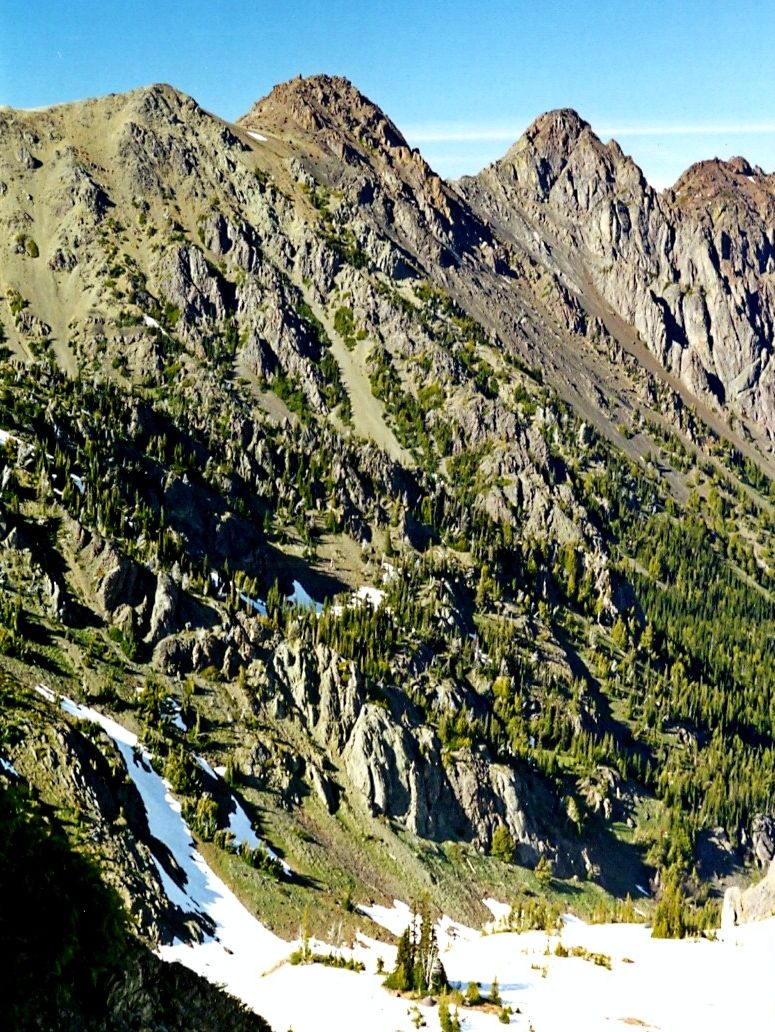
The tranquil expanse of Sierra County, California, renowned for its towering pines and serene landscapes, found its natural quiet shattered on the early morning of August 8, 2025. What began as a report of a possible deceased individual at a remote, dispersed campsite south of the rural community of Sierra Brooks, east of Downieville, quickly escalated into a gripping homicide investigation. This remote location, often sought for its solitude, became the scene of a profound tragedy.
Shortly after midnight, deputies from the Sierra County Sheriff’s Office navigated the rugged terrain to reach the secluded site. Upon their arrival, law enforcement encountered a scene that would initiate a complex inquiry: the lifeless body of a woman and, nearby, a man described by authorities as “incoherent.” The discovery immediately raised significant red flags, signaling that this was no mere accident in the wilderness.
Authorities were quick to specify that the body was located in a “dispersed area” and “was not a developed camping area,” further emphasizing the isolated nature of the incident. This detail underscores the challenges inherent in responding to and investigating events in such remote and untamed environments, far removed from established infrastructure or residential zones.

Just hours following the grim discovery, a significant development occurred. Jesse James Dallmann, a 36-year-old resident of Sun Valley, Nevada, was taken into custody at Eastern Plumas Hospital. Jail records subsequently confirmed that Dallmann faces serious charges, including murder and inflicting corporal injury to a spouse or cohabitant, marking a pivotal moment in the nascent investigation.
The suspicious circumstances surrounding the woman’s death prompted the Sierra County Sheriff’s Office to seek specialized assistance. Experts from the California Department of Justice Bureau of Forensic Science were dispatched to the scene, tasked with meticulously uncovering the truth concealed within the silent clues of the wilderness. Additionally, detectives from the Plumas County Sheriff’s Office joined the collaborative effort, pooling resources and expertise to piece together the sequence of events.
As the investigation unfolded and Dallmann was booked into the Nevada County Jail, a palpable sense of shock rippled through the close-knit Sierra County community. Despite the unsettling nature of the event, officials moved swiftly to provide reassurance. Sheriff Mike Fisher issued a statement emphasizing that authorities “believe this was an isolated incident and that there is no ongoing threat to the community,” an assurance aimed at quelling rising fears among residents.

However, many questions surrounding the tragedy persist. The identity of the deceased woman remains undisclosed by authorities, shrouding her story in mystery. Details regarding the specific cause of her death and the intricate events leading up to the grim discovery in the isolated woods have also been withheld, leaving the public to contend with an unsettling lack of information.
The Sierra County case, while distinct in its particulars, resonates with other instances of unexpected death in wilderness settings, underscoring both the allure and the inherent dangers of remote environments. These incidents frequently present unique challenges to law enforcement and investigative bodies, often requiring extensive resources and specialized skills to navigate difficult terrains and cryptic circumstances.
One such case, which unfolded in a different part of California, involved the tragic discovery of 30-year-old Caroline Meister. Described as an “experienced and avid” hiker, Meister went missing after embarking on a solo day hike on March 18. Her disappearance triggered a four-day search operation in the expansive Ventana Wilderness of Monterey County, a search that encompassed multiple search and rescue teams, K9 units, drone technology, and even heat-sensing aircraft.

Meister, who had lived and worked at the Tassajara Zen Center for over a year and a half, was well-acquainted with the local trails. She had departed the center at 10 AM, prepared for a day excursion with food and appropriate clothing, though not equipped for an overnight stay. Her intended route included a trail that loops back to the Zen Center, and she had also mentioned hiking the Windcave Trail, an unofficial path known within the hiking community.
When Meister failed to return, concerned staff and friends at the Zen Center initiated a search before contacting the Monterey County Sheriff’s Office. The intensive search efforts culminated on a Friday when search and rescue personnel, conducting a “high angle search” off the “Cut Off” trail, discovered her body over a steep drop-off at the base of a waterfall. Rescuers rappelled down to recover her.
Unlike the Sierra County incident, the sheriff’s office determined that Meister’s injuries were “consistent with falling down a cliff,” and importantly, there were “no signs of foul play.” This distinction highlights the varied perils that can be encountered in the wild, from unforeseen accidents to deliberate acts of violence. Meister’s parents expressed profound gratitude to all those involved in the search for their daughter, while Heather Iarusso, director of the Tassajara Zen Mountain Center, affirmed that hiking alone was not uncommon in the area. Ms. Iarusso stated, “She was not out there doing anything risky,” and described Meister as “a lovely human being,” and “an amazingly sweet, bright spirit, very gentle and kind and helpful,” emphasizing the deep loss felt by the community.

Further demonstrating the breadth of challenges faced by authorities in remote locales, another significant case recently emerged in Washington State. In the Buckhorn Wilderness of the Olympic National Forest in Clallam County, the body of a woman was found deep within the remote landscape on a Friday. Investigators believe the woman was “the victim of a homicide,” though specific details about how she was killed, her attire, or her age remain undisclosed.
Authorities indicated that the woman did not appear to have been deceased for an extended period. The discovery site, off Forest Service Road 28 near Blyn, was so dense and isolated that investigators had to resort to tying brightly colored ribbons to trees to navigate the remote roads and locate the crime scene. Clallam County Sheriff Sgt. John Hollis described it as a “wide-open investigation,” noting that the woman’s description did not match any local missing persons reports.
Given that the body was discovered on federal forest land, the Federal Bureau of Investigation (FBI) is actively assisting in the inquiry, a common practice in cases spanning jurisdictional boundaries or involving federal property. Much like the Sierra County incident, authorities in Clallam County have also sought to reassure the public, stating that they “do not believe there is a threat to the general public,” while underscoring the ongoing nature of the process to identify the victim and notify next of kin.

The parallels between these cases—the isolation of the settings, the inherent difficulties in investigation, and the profound impact on affected communities—underscore a critical aspect of life and death in America’s vast wilderness. While the natural world offers unparalleled beauty and solace, it can also conceal profound mysteries and become the stage for human tragedy.
In Sierra County, the remote campsite that once promised peace now stands as a somber monument to a life abruptly ended and the pursuit of justice. The ongoing efforts of the Sierra County Sheriff’s Office, in collaboration with forensic experts and detective partners, reflect an unwavering commitment to uncover the full truth behind the August 8 discovery. As the community quietly awaits further answers, the incident serves as a stark reminder of the fragile boundary between serenity and peril, even in the most secluded corners of the natural world, and the relentless dedication required to bring clarity to such harrowing events.
These incidents highlight the complex tapestry of life in and around remote American landscapes, where the quietude can be deceptive, and the work of law enforcement is often arduous and protracted. Each case, from the suspected homicide in Sierra County to the tragic fall of an experienced hiker, and another investigation in Washington’s deep woods, contributes to a broader understanding of the challenges inherent in managing and comprehending death in the wild. The relentless pursuit of facts, whether pointing to accident or crime, remains paramount in the quest for closure for victims and their communities.



